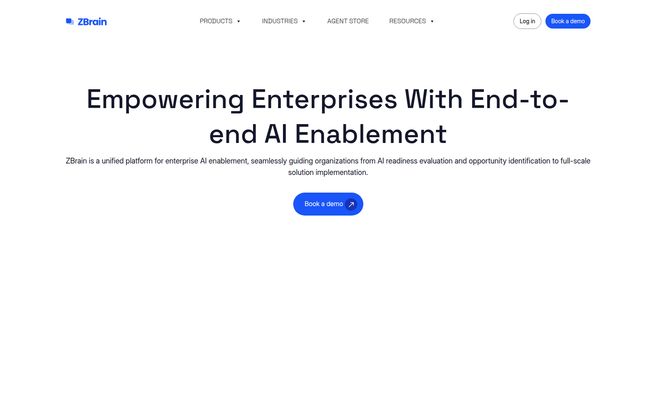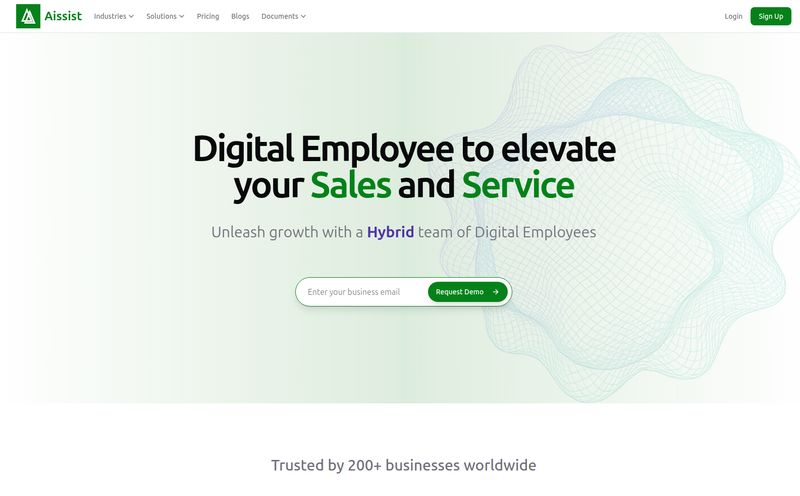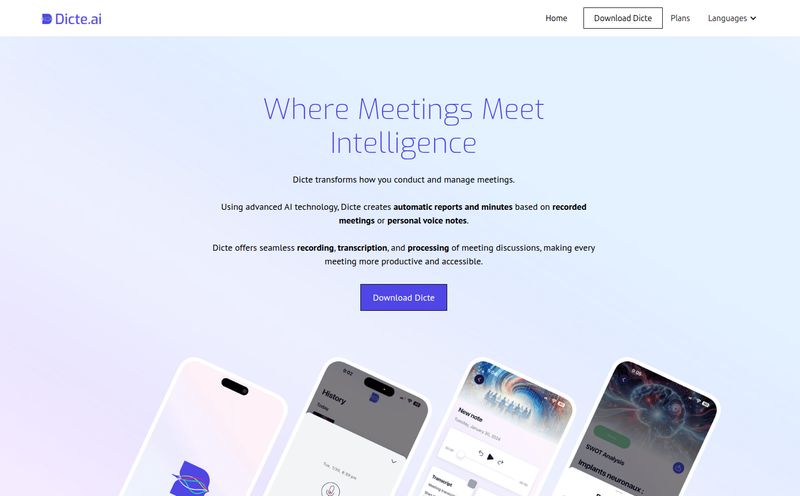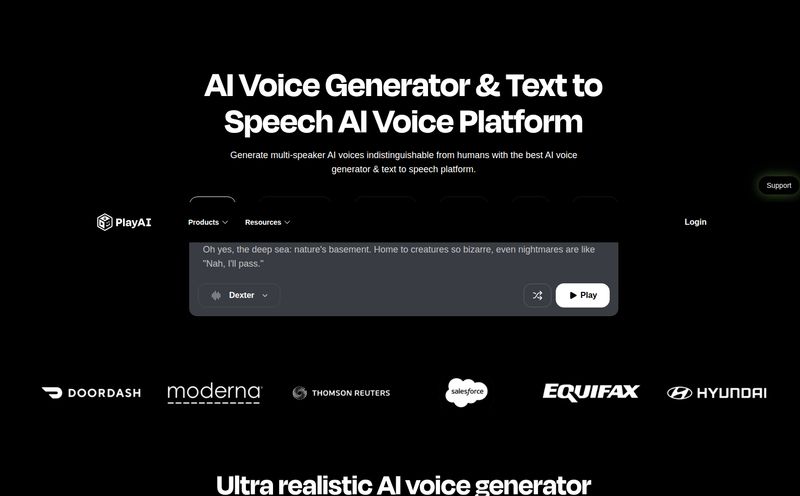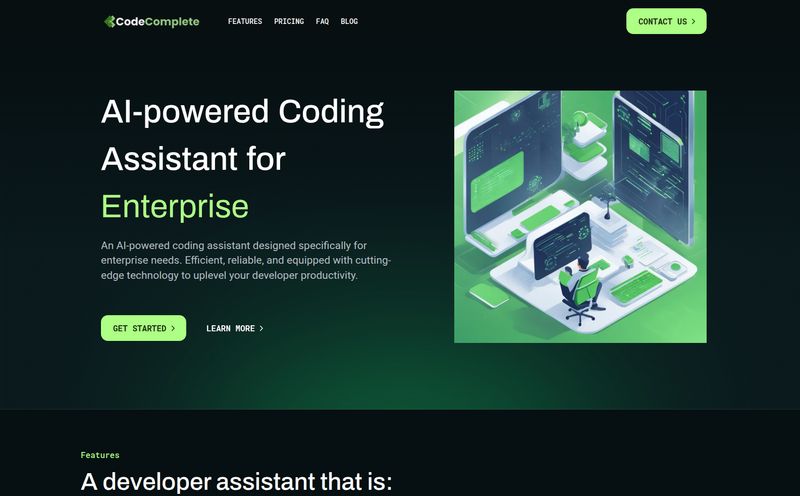The AI hype train has been chugging along at full steam for a while now, and if you're in the business world, you've felt the pressure. Every other headline is about how generative AI is going to change everything. And it might! But for most serious companies, the big question isn't if they should use AI, but how. How do you plug this incredible power into your own systems, with your own private data, without, you know, setting everything on fire?
I've seen so many tools that are basically just fancy wrappers for ChatGPT. They're cool, but they don't solve the core enterprise problem: integration, security, and building something genuinely yours. So when I came across ZBrain, my professional skepticism was cranked to eleven. It claims to be an “end-to-end AI enablement” platform. A big claim. But after digging in, I’ve got to say… they might actually be onto something.
So What is ZBrain, Really?
Forget the jargon for a moment. Think of it like this: you want to build a custom, high-tech workshop in your factory. You can't just drop a pre-fabricated shed in the middle of the floor and hope for the best. You need to survey the site, draw up blueprints, bring in the right tools, and then train your team to use the new machinery safely.
That's what ZBrain seems to be doing for AI. It’s a unified platform designed to take businesses from “Hmm, maybe we should do something with AI?” all the way to a fully deployed, custom AI solution humming away with your private data. Its not just about chatting with a bot; it’s about building intelligent systems that understand your business from the inside out.
The Three Pillars of ZBrain's Approach
ZBrain seems to break down this massive undertaking into three manageable chunks. It's a logical flow that I appreciate, moving from strategy to execution.
First, You Plan the Attack with ZBrain XPLR
This is their AI Readiness Assessment Framework. Honestly, this might be the most important part. Too many companies jump into AI spending a ton of money without a clear plan. ZBrain XPLR is like that brutally honest consultant who comes in, looks at your data, processes, and goals, and tells you where AI can actually make a difference—and where it can’t. It’s the blueprint phase, preventing you from building a million-dollar solution to a ten-dollar problem.
Then, You Build Your Machine with ZBrain Builder
Once you have a plan, you need the tools. The ZBrain Builder is the implementation engine. This is where you get your hands dirty, creating custom AI applications and orchestrating how they work with your existing enterprise software. The key here is its ability to source data from multiple places and integrate with the tools your team already uses. This avoids the dreaded “yet another platform” syndrome that gives IT departments nightmares.
Finally, You Put AI to Work with ZBrain AI Agents
This is the payoff. An AI Agent isn't just a chatbot. It's a specialized AI tool designed for a specific department. ZBrain highlights agents for:
- Sales: Handling lead qualification or providing reps with instant product info.
- Marketing: Analyzing campaign data or handling segmentation.
- Customer Service: Offering instant, intelligent support and suggesting solutions.
- HR & Legal: Streamlining repetitive tasks, ensuring compliance, or assisting with document review.
This is where the abstract idea of “AI” becomes a tangible asset that actually helps your team do their jobs better. It's the difference between having a pile of powerful engine parts and having a car that can actually drive.
Why This Approach Actually Matters for Businesses
I’ve seen a lot of platforms, and what stands out to me here is the focus on solving real-world enterprise headaches. The biggest one? Data security and privacy. Using your proprietary, sensitive business data with a public AI model is a non-starter for most legal and compliance teams. ZBrain is built around the idea of creating ChatGPT-like experiences using your private data, which is the holy grail for enterprise AI right now. They emphasize robust security measures, which is a breath of fresh air.
The other major benefit is the reduction in complexity. Trying to stitch together a data source, a vector database, a large language model (LLM), and a user interface on your own is a massive technical challenge. A platform that orchestrates all of this is a huge win, potentially saving months of development time and reducing the need for a whole squad of specialized AI engineers. It's about resource optimization, and in this economy, that's everything.
Let's Talk Money: Breaking Down ZBrain's Pricing
Alright, the all-important question: what's this going to cost? ZBrain has a two-tiered approach, which is pretty standard for this kind of B2B platform.
| Plan | Price | Key Features |
|---|---|---|
| Growth | $999 / month | 200,000 Credits/Month, 5GB Knowledge Storage, API Access, Email Support. Includes a 7-day free trial. |
| Enterprise | Contact for Pricing | Custom SSO, Unlimited Users & Integrations, Deployment Assistance, InfoSec Review, Priority Support. |
Decoding the ZBrain Credit System
The Growth plan runs on a credit system, which can be a bit confusing at first glance. Think of it like a utility bill. You have a fixed cost just for running a process, and then a variable cost depending on what that process does.
- Fixed Cost: Every time you run a workflow, it costs a baseline of 5 credits.
- Variable Cost: If your workflow needs to call out to a third-party service, like an external LLM from OpenAI or a specialized database, it will cost extra credits. If you have ZBrain manage the API key for that service, they charge you what the service costs them, plus a 20% management fee. That 20% is the price of convenience, saving your team the hassle of managing it themselves.
The Enterprise plan, on the other hand, seems to be an all-you-can-eat model, which makes sense for large-scale deployments where counting credits would be a nightmare.
Who is ZBrain Really For? My Honest Take
Let’s be blunt. This is not a tool for a solopreneur or a small startup trying to build a weekend project. The pricing and the feature set are clearly aimed at mid-to-large-sized enterprises. This is for the company that has multiple departments, sensitive customer or financial data, and a real budget allocated to digital transformation. It’s for businesses that understand the potential of AI but are rightly cautious about security, scalability, and implementation complexity.
If you're a CTO, an IT Director, or a Head of Innovation at a decent-sized company, ZBrain should probably be on your list of platforms to investigate. If you're a blogger, you probably don't need this.
Frequently Asked Questions About ZBrain
Can I use my own private company data with ZBrain?
Absolutely. In fact, that's one of its main selling points. The platform is designed to let you build AI applications that are securely trained on or have access to your private, internal data sources.
Is ZBrain just another wrapper for ChatGPT?
No. While it can integrate with LLMs like those from OpenAI, ZBrain is a comprehensive enterprise framework. It includes readiness assessment (XPLR), a custom application builder (Builder), and deployment tools, which goes far beyond a simple API wrapper.
What are the 'AI Guardrails' mentioned in the Enterprise plan?
Think of guardrails as a set of rules and policies you enforce on the AI's output. This is crucial for businesses to ensure the AI's responses are compliant with regulations, factually accurate, on-brand, and non-toxic. It's a critical feature for risk management.
Is the $999/month Growth Plan enough to get started?
For many businesses, yes. It seems well-suited for developing a proof-of-concept or launching an initial, limited-scope AI agent. The 7-day trial is the perfect way to test the waters before committing. You'll want to move to Enterprise once you're ready to scale across the organization.
How does ZBrain's platform improve data security?
ZBrain is designed for enterprise use, which means security is a core component, not an afterthought. It allows you to build systems that work with your data in your own environment, and the Enterprise plan includes an InfoSec (Information Security) review to ensure it meets your company's specific security protocols.
The Final Word on ZBrain
Navigating the world of enterprise AI is tricky. There's a lot of noise and a lot of solutions that look good on the surface but can't handle the heat of a real corporate environment. ZBrain appears to be taking a refreshingly practical and comprehensive approach.
It’s not a magic wand, but it does look like a very powerful, well-thought-out toolkit. By combining assessment, building, and deployment into one platform with a heavy emphasis on security, ZBrain is addressing the biggest barriers to AI adoption for serious businesses. If your company is ready to move beyond just talking about AI and start building with it, this is a platform worth a very close look.
